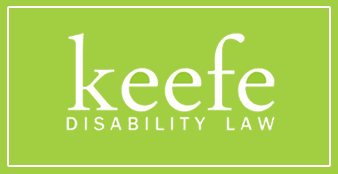.jpg) Although skin cancer is highly curable if caught early, many patients delay getting proper treatment simply because they do not believe they could have the condition. Unfortunately, people who are not aware of the facts about skin cancer are actually more likely to contract the disease, since they are less likely to take the proper precautions.
Although skin cancer is highly curable if caught early, many patients delay getting proper treatment simply because they do not believe they could have the condition. Unfortunately, people who are not aware of the facts about skin cancer are actually more likely to contract the disease, since they are less likely to take the proper precautions.
7 Myths About Skin Cancer That Could Put Your Life at Risk
Rumors about sun exposure and skin cancer risk may be mistaken for facts, making many people unaware of the potential dangers. Some of the most common myths include:
- I’m too young to get skin cancer. The most common form of cancer in adults aged 25 to 29 is melanoma, especially for women. Skin cancer in later life may actually be due to sun exposure and UV damage that a person suffers over his or her lifetime, making every tan and sunburn a potential cancer risk. It is therefore important for all young adults to use effective sunscreen, wear sunglasses or a hat, and cover their arms and legs when exposed to the sun for long periods.
- Skin cancer isn’t deadly anymore. Thousands of people die from skin cancer every year. The American Cancer Society estimates that over 9,000 people will die just from melanoma—the deadliest form of skin cancer—in a single year. The good news is that the five-year survival rate for patients whose melanomas are detected early is over 90%, making prevention and diagnosis the keys to survival. People should undergo skin cancer screenings at least once a year, and see a doctor right away if they have any itchy patches of skin or abnormal moles.
- People with dark skin can’t get skin cancer. While people with darker skin have a lower risk of skin cancer than people with lighter skin, they are not completely immune to skin cancer. In fact, it is this myth that often leads to later diagnosis in people with darker skin, making treatment more aggressive and less effective. Darker-skinned men and women should still wear protective clothing (including hats and sunglasses) to protect themselves from harmful UV exposure.
- I don’t need to wear sun protection if I’m only outdoors for a short while. Even ten minutes of unprotected sun exposure can cause irreparable damage to skin cells, increasing the likelihood of skin cancer. Driving with the windows rolled down or walking your dog during peak daylight hours can cause a tan or a burn in fair-skinned people, placing them at risk of squamous cell cancer. You can reduce your risk by keeping a light jacket in the car and sticking to the shade while walking or sitting outdoors.
- Tanning beds are safer than tanning in the sun. The UV light from tanning beds and sun lamps is just as dangerous as the UV radiation from the sun, with the added hazard that people can develop skin damage all over their bodies. To reduce your risk of melanoma, skip the tanning booths and stick to spray tans or sunless tanning lotions.
- I only need to wear sunscreen in the summer. While using sunscreen in the summer is a good idea, you should apply it anytime you are outdoors for long periods. People can get sunburned on cloudy or overcast days, or while the ground is covered in snow. People who ski, walk, or run should apply sunscreen of at least SPF 30 wherever their skin is exposed, regardless of the season.
- I only need the daily SPF that’s included in my face lotion. Some lotions, lip balms, and daily moisturizers provide some sun protection, but not nearly enough to last all day. Most contain SPF 15, which is enough to stay outside for about twenty minutes with a single application. If you are going to be outside for more than half an hour, it is recommended that you use at least one tablespoon of SPF 30+ sunscreen on your face (and a handful on your body, if your arms and legs are exposed). Make sure that the sunscreen protects against both UVA and UVB radiation, commonly called broad-spectrum.
If your skin cancer diagnosis prevents you from working, you may be eligible for Social Security disability benefits. To get started on your disability application, please contact our law firm today or download our free report, Five Most Frequently Asked Questions about Social Security Disability.
Are You Looking for a Social Security Disability Attorney in Boston, MA?
If you are looking to apply for social security disability, you need to speak with an experienced social security disability lawyer as soon as possible. Please contact us online or call our Natick Office directly at 508.283.5500 to schedule your free consultation.
|
Related Links: |


